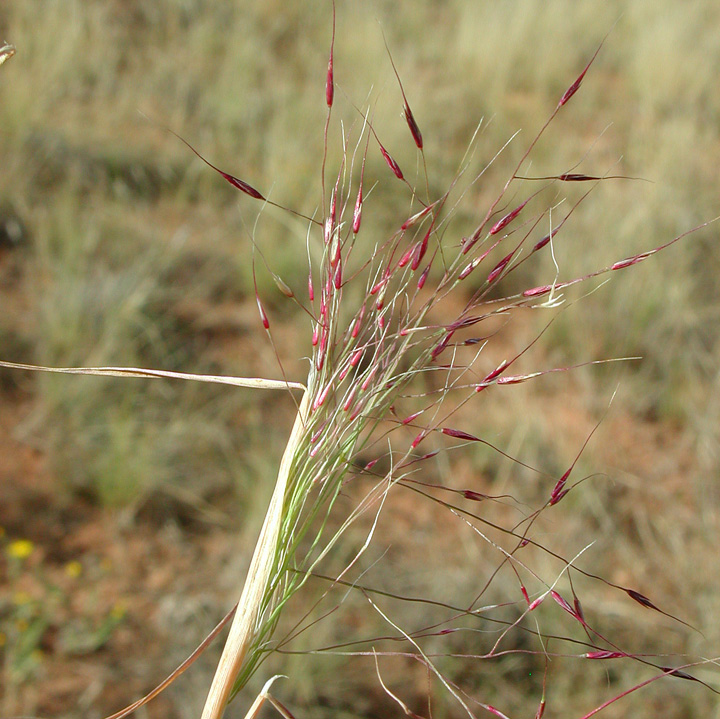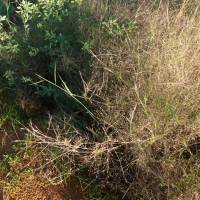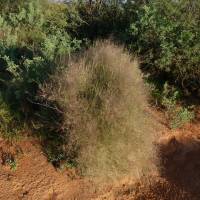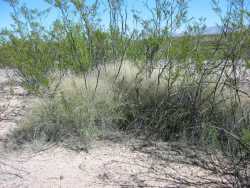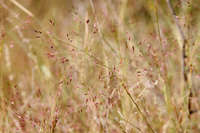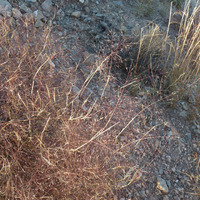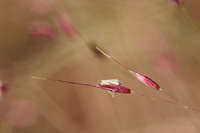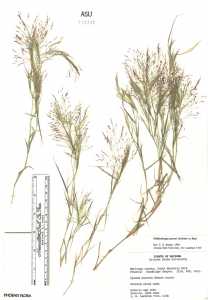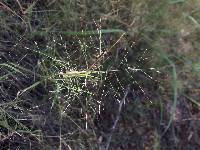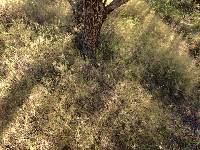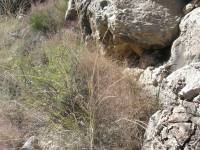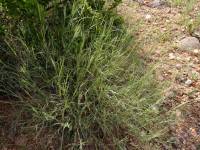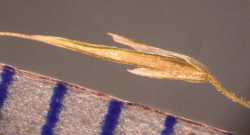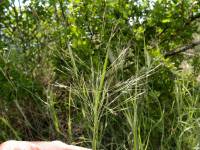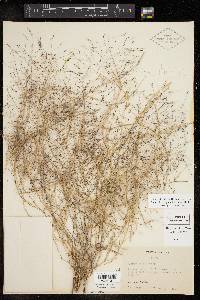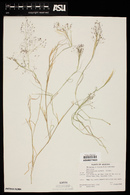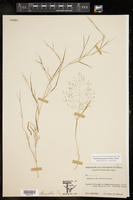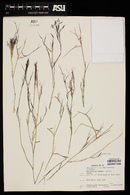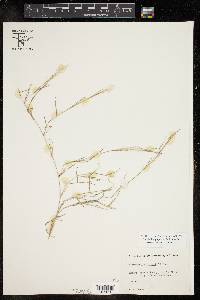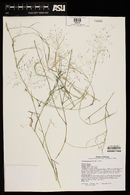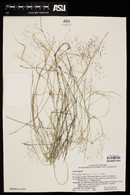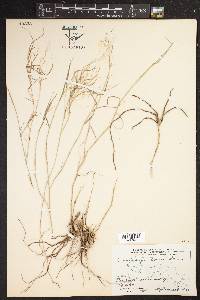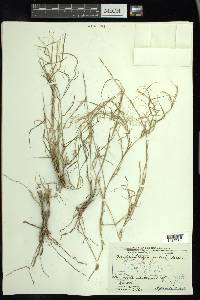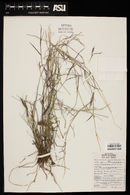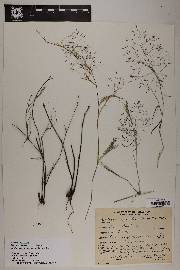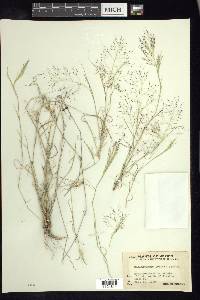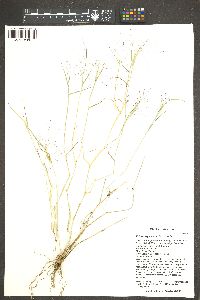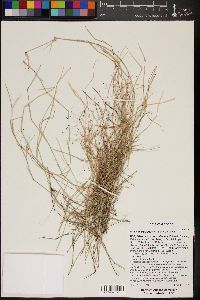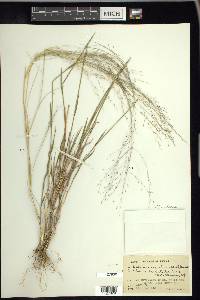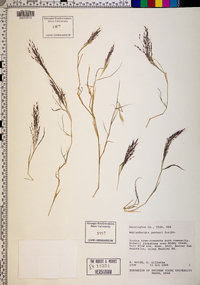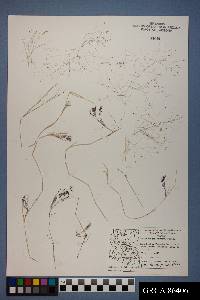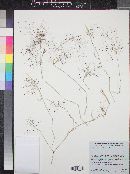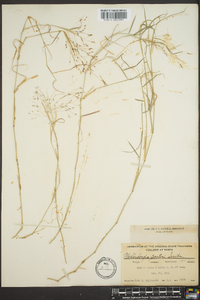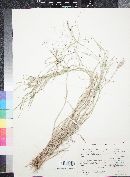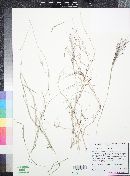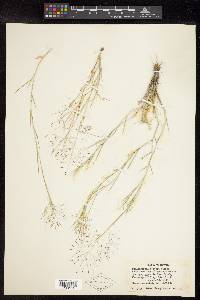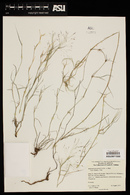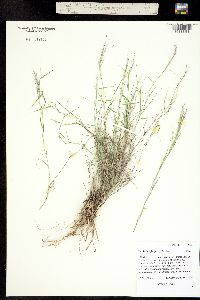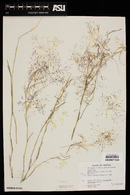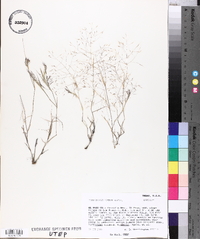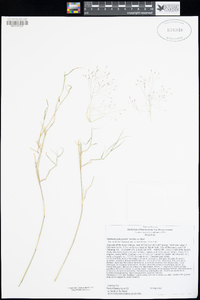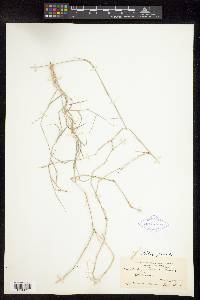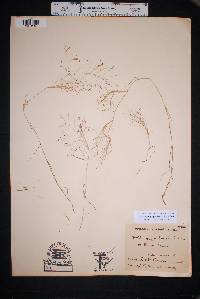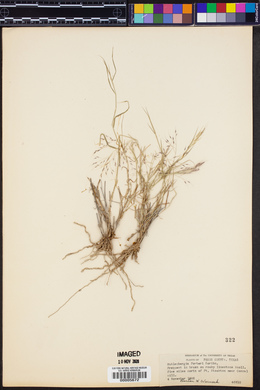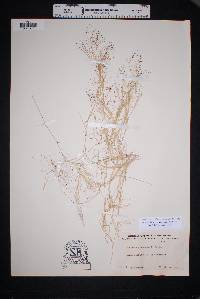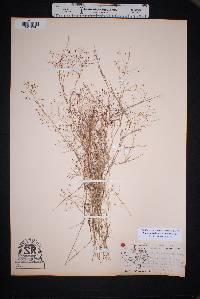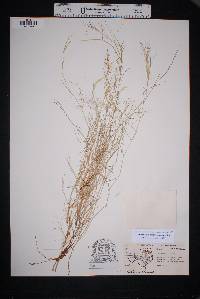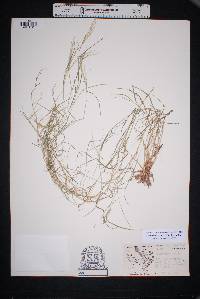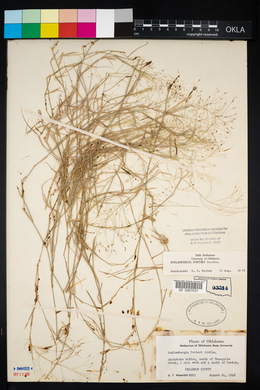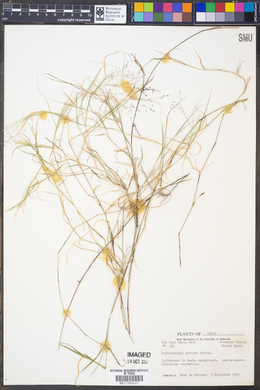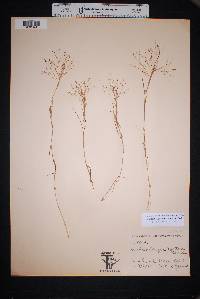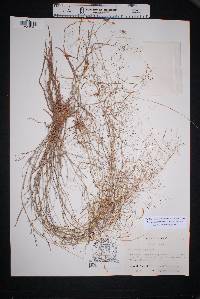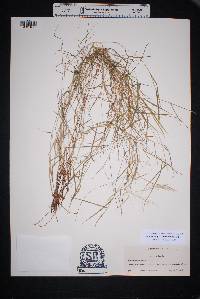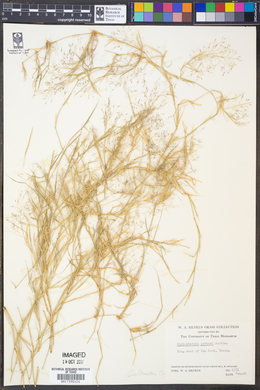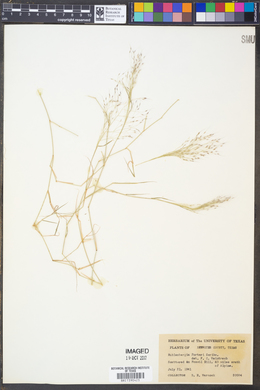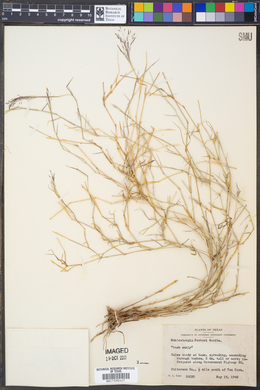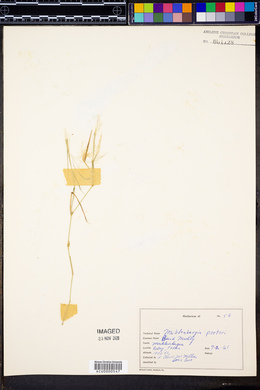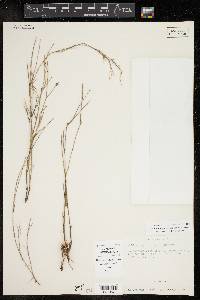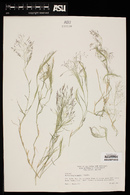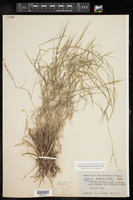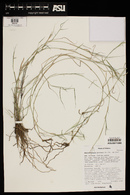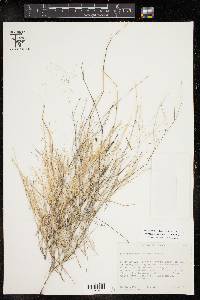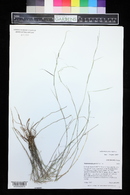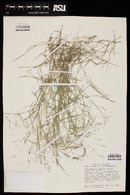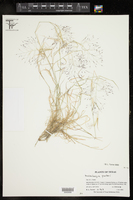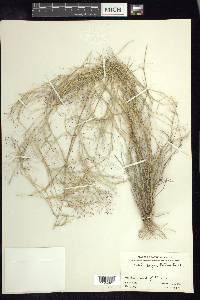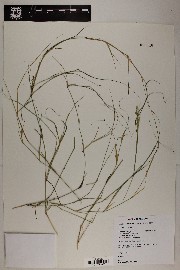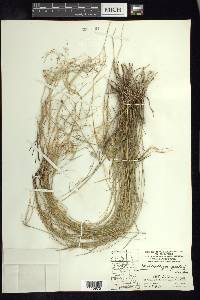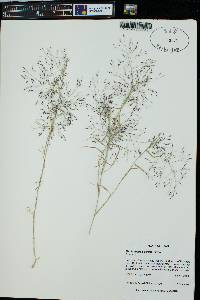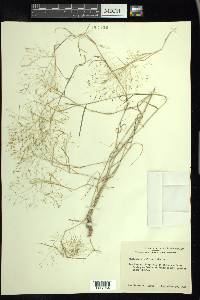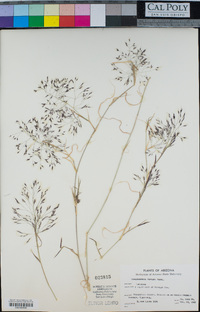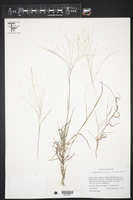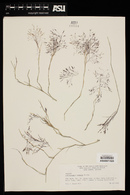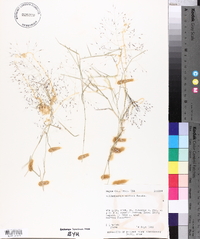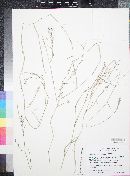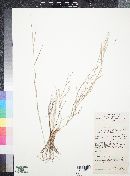
|
|
|
|
Family: Poaceae
Bush Muhly, more... (es: zacate aparejo)
|
Plants perennial; loosely cespitose from a knotty base, not rhizomatous, distinctly bushy in appearance. Culms 25-100 cm tall, 0.5-1.5 mm thick, erect, geniculate, wiry, freely branched, branches stiff, geniculate, widely divergent; internodes scabridulous throughout. Sheaths shorter than the internodes, glabrous; ligules 1-2.5(4) mm, truncate, lacerate, with lateral lobes; blades 2-8 cm long, 0.5-2 mm wide, flat or folded, smooth or scabridulous abaxially, scabridulous adaxially. Panicles 4-14 cm long, 6-15 cm wide, open, not dense, usually purple; primary branches 1-7.5 cm, diverging 30-90° from the rachises, stiff, naked basally; pedicels 2-13(20) mm, scabrous. Spikelets 3-4.5 mm. Glumes 2-3 mm, shorter than the lemmas, 1-veined, veins scabrous, apices gradually acute to acuminate, occasionally mucronate, mucros to 0.4 mm; lemmas 3-4.5 mm, lanceolate, purplish, appressed-pubescent on the lower 1/2-3/4 of the margins and midveins, apices acuminate, awned, awns 2-13 mm, straight; paleas 3-4.5 mm, lanceolate, acuminate; anthers 1.5-2.3 mm, purple to yellow. Caryopses 2-2.4 mm, oblong, compressed, yellowish-brown. 2n = 20, 23, 24, 40. Muhlenbergia porteri grows among boulders on rocky slopes and on cliffs, and in dry arroyos, desert flats, and grasslands, frequently in the protection of shrubs, at elevations of 600-1700 m. Its geographic range extends from the southwestern United States to northern Mexico. Muhlenbergia porteri is highly palatable to all classes of livestock, but is never abundant at any particular location. Dr. David Bogler, USDA NRCS PLANTS Database Perennials, Terrestrial, not aquatic, Stems trailing, spreading or prostrate, Stems nodes swollen or brittle, Stems erect or ascending, Stems geniculate, decumbent, or lax, sometimes rooting at nodes, Stems caespitose, tufted, or clustered, Stems terete, round in cross section, or polygonal, Stems branching above base or distally at nodes, Stem internodes hollow, Stems with inflorescence less than 1 m tall, Stems, culms, or scapes exceeding basal leaves, Leaves mostly cauline, Leaves conspicuously 2-ranked, distichous, Leaves sheathing at base, Leaf sheath mostly open, or loose, Leaf sheath smooth, glabrous, Leaf sheath and blade differentiated, Leaf blades disarticulating from sheath, deciduous at ligule, Leaf blades linear, Leaf blades very narrow or filiform, less than 2 mm wide, Leaf blades mostly flat, Leaf blade margins folded, involute, or conduplicate, Leaf blades mostly glabrous, Leaf blades scabrous, roughened, or wrinkled, Ligule present, Ligule an unfringed eciliate membrane, Inflorescence terminal, Infloresc ence an open panicle, openly paniculate, branches spreading, Inflorescence solitary, with 1 spike, fascicle, glomerule, head, or cluster per stem or culm, Inflorescence branches more than 10 to numerous, Flowers bisexual, Spikelets pedicellate, Spikelets laterally compressed, Spikelet less than 3 mm wide, Spikelets with 1 fertile floret, Spikelets solitary at rachis nodes, Spikelets all alike and fertille, Spikelets bisexual, Spikelets disarticulating above the glumes, glumes persistent, Spikelets disarticulating beneath or between the florets, Rachilla or pedicel glabrous, Glumes present, empty bracts, Glumes 2 clearly present, Glumes equal or subequal, Glumes shorter than adjacent lemma, Glumes 1 nerved, Lemmas thin, chartaceous, hyaline, cartilaginous, or membranous, Lemma similar in texture to glumes, Lemma 3 nerved, Lemma body or surface hairy, Lemma apex acute or acuminate, Lemma distinctly awned, more than 2-3 mm, Lemma with 1 awn, Lemma awn less than 1 cm long, Lemma awn 1-2 cm long, Lemma awned from tip, Lemma awns straight or curved to base, Lemma margins thin, lying flat, Lemma straight, Callus or base of lemma evidently hairy, Callus hairs shorter than lemma, Palea present, well developed, Palea membranous, hyaline, Palea about equal to lemma, Palea 2 nerved or 2 keeled, Stamens 3, Styles 2-fid, deeply 2-branched, Stigmas 2, Fruit - caryopsis, Caryopsis ellipsoid, longitudinally grooved, hilum long-linear.
FNA 2003, Gould 1980 Common Name: bush muhly Duration: Perennial Nativity: Native Lifeform: Graminoid General: Perennial grass from a hard, knotty base with slender, wiry, geniculate, much-branched stems, often weak, 10-40 cm; the plant is distinctively bushy in appearance, and not rhizomatous; stems have numerous nodes and short internodes, the internodes mostly scabrous or minutely puberulous. Vegetative: Sheaths open, spreading away from stems; blades short, flat or folded, 0.5-2 mm broad, usually scabrous; ligule membranous, translucent white, truncate, lacerate, occasionally longer on the sides, 1-2 mm. Inflorescence: Numerous fine, many-branched terminal panicles, mostly 4-10 cm long and nearly as broad; spikelets maturing purple; glumes thin, membranous, glabrous, narrowly lanceolate, acute or acuminate; lemma more or less puberulous, body 3-4.5 mm long, awn 5-10 mm long; palea awnless, glabrous or puberulent. Ecology: Found among boulders on rocky slopes and on cliffs, in dry arroyos, desert flats, and grasslands, frequently in the protection of shrubs, from 2,000-6,000 ft (610-1829 m); flowers August-November. Distribution: s CA and s NV east to s CO and w TX; south to c MEX. Notes: Muhlenbergia is a large and diverse genus primarily distinguished by having single-flowered spikelets with unequal glumes. This species easy to distinguish as a perennial with spreading, highly-branched, wiry stems which lay on the ground, spread though other vegetation, and form a tangled mass; the bases are knotty but not rhizomatous, the plants generally have a reddish color all over, the inflorescences are open, tending to be partially concealed by leaf sheaths, and the spikelets have delicate awns up to 1 cm long. Ethnobotany: Unknown Etymology: Muhlenbergia is named for Gotthilf Heinrich Ernst Muhlenberg (1753-1815) a clergyman and botanist from Pennsylvania; porteri is named for Thomas Conrad Porter (1822-1901) an American botanist. Synonyms: None Editor: SBuckley 2010, FSCoburn 2014, AHazelton 2015 |
|
|
|

